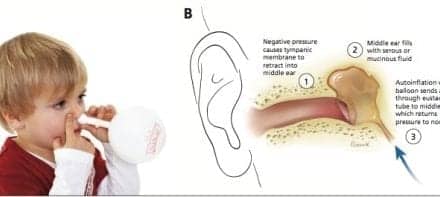
According to an announcement from the ASA, the initial study results suggest that even when fathers are interacting with their children, they engage less in some of the intonational speech patterns that mothers use. For the study, the Washington State research team reportedly outfitted preschoolers and their parents with recording devices to monitor social interactions over the course of a normal day. They used speech-recognition software to pull apart the recordings and determine who was talking to whom, and when. They compared the difference between the way the mothers and fathers spoke to their children versus how those parents spoke to adults.
The work confirmed previous studies, ASA reports, which showed that the mothers used higher pitch and varied their pitch more when interacting with their child than with adults. The fathers, on the other hand, did not show the same speech pattern, instead talking to their children using intonation patterns more like when they talked to other adults.
“This isn’t a bad thing at all—it’s not a failing of the fathers,” said lead study investigator Mark VanDam, PhD, a professor in the Speech and Hearing Sciences department at Washington State University. “We think that maybe fathers are doing things that are conducive to their children’s learning but in a different way. The parents are complementary to their children’s language learning,”
VanDam refers to this as “the bridge hypothesis,” which proposes that when fathers speak to their children more like adults, they may act as a link to the outside world by helping them to deal with unfamiliar speech.
According to ASA, VanDam says that the fathers’ less frequent use of the high-pitches or speech patterns that characterize baby talk doesn’t mean that they aren’t modifying their speech in other ways. They may be using different vocabulary, for instance, or changing the volume or duration of their speech. VanDam believes the age and sex of the child might also influence a father’s communication style.
The pilot study looked only at families with a mother and father who both lived full-time with the child, ASA reports, so the researchers don’t know how the results might differ in single-parent families or those headed by same-sex couples. This study is just one part of a larger initiative at Washington State to examine how fathers support their children’s language development from infancy through early childhood. This is said to be the first study that has examined fathers’ verbal interactions with their children in a real-world setting and using automatic data processing.
VanDam and his colleagues are interested in addressing these same questions in families with children with hearing loss in order to understand how hearing loss impacts speech production and learning.
The abstract for presentation #2aSC8, “Fathers’ use of fundamental frequency in motherese” by Mark VanDam, Paul DePalma, and William Strong can be found by searching for the presentation number on the ASA Meeting abstracts website.
Source: ASA, Washington State University
Photo credits: ASA; Speech & Language Lab/Washington State University






